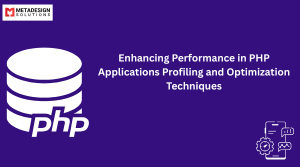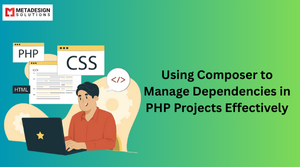Introduction to PHP Security
Why PHP Security Matters
PHP is one of the most widely used server-side scripting languages in web development. It powers a significant portion of the web, particularly content management systems like WordPress, Drupal, and Joomla. Given its widespread use, PHP applications are constantly under attack, making security a critical consideration for developers.
Whether you’re building a small blog or a large-scale enterprise application, ensuring that your PHP code is secure is paramount. A security breach can lead to data theft, unauthorized access, and reputational damage. As such, understanding and implementing PHP security best practices is essential for every developer.
Common Attacks on PHP Applications
Before diving into specific security issues and solutions, it’s important to understand the common attacks that PHP applications face. The most prevalent attacks include:
- SQL Injection: Attackers exploit vulnerabilities in SQL queries to manipulate databases.
- Cross-Site Scripting (XSS): Malicious code is injected into web pages, which then executes in a user’s browser.
- Cross-Site Request Forgery (CSRF): Attackers trick authenticated users into performing unintended actions.
By understanding these attacks, you can better mitigate the risks they pose.
Understanding SQL Injection
What is SQL Injection?
SQL Injection is one of the most common and dangerous vulnerabilities in web applications. It occurs when an attacker can manipulate the SQL queries your application sends to the database by injecting malicious code. If the application doesn’t properly validate or sanitize user input, attackers can use SQL Injection to perform unauthorized actions like deleting data, retrieving sensitive information, or altering the database structure.
How SQL Injection Works
Imagine an application that asks users to input their username and password for authentication. An insecure SQL query might look something like this:
$query = “SELECT * FROM users WHERE username = ‘$username’ AND password = ‘$password'”;
If an attacker enters something like admin’ OR ‘1’=’1, the query would become:
$query = “SELECT * FROM users WHERE username = ‘admin’ OR ‘1’=’1′ AND password = ””;
This query would always return true, allowing the attacker to bypass authentication.
Preventing SQL Injection in PHP
The best way to prevent SQL Injection in PHP is by using prepared statements and parameterized queries. These techniques ensure that user input is treated as data, not executable code.
Example with PDO:
$stmt = $pdo->prepare("SELECT * FROM users WHERE username = :username AND password = :password");
$stmt->bindParam(':username', $username);
$stmt->bindParam(':password', $password);
$stmt->execute();
Secure Your Web Application
Worried about vulnerabilities in your PHP code? Book a meeting to explore how we help secure your applications from SQL Injection, XSS, and CSRF.
By using prepared statements, the variables $username and $password are automatically sanitized, preventing any potential injection attacks.
3. Cross-Site Scripting (XSS) Explained
What is XSS?
Cross-Site Scripting (XSS) occurs when an attacker injects malicious scripts into web pages that are then executed by other users’ browsers. These scripts can steal session cookies, deface web pages, or redirect users to malicious sites.
Types of XSS Attacks
There are three main types of XSS attacks:
- Stored XSS: Malicious script is stored on the server and executed whenever the affected page is loaded by a user.
- Reflected XSS: The malicious script is reflected off the server in an error message, search result, or other response.
- DOM-Based XSS: The attack occurs when the client-side scripts on the page manipulate the DOM (Document Object Model) in unsafe ways.
How to Prevent XSS in PHP
The key to preventing XSS attacks is output encoding. When rendering user input in HTML, you should always use functions like htmlspecialchars() to escape special characters and prevent them from being treated as executable code.
Example:
echo htmlspecialchars($user_input, ENT_QUOTES, ‘UTF-8’);
This ensures that any potentially dangerous characters (like <, >, or “) are safely encoded, preventing them from being executed as code in the browser.
4. Cross-Site Request Forgery (CSRF)
What is CSRF?
Cross-Site Request Forgery (CSRF) is an attack where a malicious user tricks an authenticated user into performing an unwanted action on a website. Since the user is authenticated, the request appears legitimate to the server, leading to potential actions like changing passwords, making purchases, or deleting data.
How CSRF Attacks Work
For example, if a user is logged into a banking website, an attacker could create a form on a malicious site that submits a request to transfer money from the victim’s account to the attacker’s. Because the victim is already authenticated, the request will go through unnoticed.
Preventing CSRF in PHP
To prevent CSRF, you should use CSRF tokens. A CSRF token is a unique, secret value generated by the server and included in forms. When the form is submitted, the server checks the token to ensure that the request is legitimate.
Example:
// Generate token
$token = bin2hex(random_bytes(32));
$_SESSION['csrf_token'] = $token;
// Include token in form
echo '<input type="hidden" name="csrf_token" value="' . $token . '">';
When the form is submitted, the server checks if the submitted CSRF token matches the one stored in the session.
5. Best Practices for Secure PHP Development
Validate and Sanitize User Input
One of the key principles of secure PHP development services is to always validate and sanitize user input. Validating input ensures that the data entered by users matches the expected format (e.g., email, phone number, etc.), while sanitizing removes any harmful or unnecessary characters that could introduce vulnerabilities.
$email = filter_var($_POST['email'], FILTER_VALIDATE_EMAIL);
if (!$email) {
die('Invalid email address.');
}
Use Prepared Statements for Database Queries
As mentioned earlier, using prepared statements helps protect against SQL Injection attacks. Always use parameterized queries when interacting with a database to ensure user input is safely handled.
Escape Output and Use Context-Sensitive Encoding
To prevent XSS attacks, always escape output before rendering it in HTML. You can use htmlspecialchars() to ensure that special characters are rendered safely.
Secure Session Management
PHP’s session management can be vulnerable if not configured properly. Always use secure, HTTP-only cookies and regenerate session IDs after login to avoid session fixation attacks.
session_start();
session_regenerate_id(true);
6. Using PHP Security Libraries
While PHP provides built-in functions to handle security, third-party libraries can help enforce security practices across your application.
HTMLPurifier
HTMLPurifier is a widely-used library that sanitizes HTML input to prevent XSS attacks. It removes any unwanted or malicious code while preserving the formatting of user-submitted content.
Password Hashing Libraries
Libraries such as PasswordLib and Symfony Security provide robust methods for securely hashing passwords and verifying user credentials. These libraries use strong cryptographic algorithms like bcrypt or Argon2 to ensure passwords are stored securely.
Once you’ve added the autoload configuration, run the following command to regenerate the autoloader:
composer dump-autoload
This command generates the necessary files for autoloading, and Composer will now automatically load your classes based on the namespace and directory structure specified.
7. Common Security Pitfalls in PHP
Hardcoded Credentials
Hardcoding credentials (e.g., database usernames and passwords) directly in your PHP code is a major security risk. If your code is exposed, attackers can easily gain access to sensitive data.
How to Avoid It: Use environment variables to store sensitive information, keeping it out of the source code.
Insecure File Uploads
Improper file validation can lead to the upload of malicious files. Always check file types, sizes, and extensions before processing them.
Using Deprecated Functions
Outdated PHP functions can introduce security vulnerabilities. Always ensure that you’re using the latest, secure versions of PHP and libraries.
8. Testing and Auditing PHP Code for Security
Testing and auditing PHP code for security vulnerabilities is a crucial step in ensuring that your application is safe and resistant to attacks. Even if you follow best practices in your development process, there is always a chance that vulnerabilities could slip through the cracks. Therefore, continuous testing and auditing are necessary to identify potential weaknesses before they are exploited by attackers.
Static Analysis Tools
Static analysis tools are essential for identifying vulnerabilities in your PHP code without actually executing it. These tools analyze the code for potential flaws by examining the source code itself. The goal is to catch issues such as SQL Injection, XSS vulnerabilities, and other security risks before they make it to production. Static analysis tools help you enforce secure coding practices and detect common security issues early in the development cycle, which is crucial for maintaining the integrity of your application.
Some popular static analysis tools for PHP include:
- PHPStan: PHPStan is a static analysis tool that helps developers find bugs and vulnerabilities in their PHP code by analyzing the code structure. It works by checking the types of variables, function calls, and various other aspects of the code to identify potential issues that might cause runtime errors or security vulnerabilities. PHPStan can be integrated with other tools and CI/CD pipelines, making it an excellent tool for preventing issues during development.
- SonarQube: SonarQube is another widely used static analysis tool that provides a comprehensive overview of your code’s quality and security. It analyzes your PHP code and identifies vulnerabilities, code smells, and potential bugs. In addition to security vulnerabilities like SQL Injection and XSS, SonarQube also looks for other issues such as poor coding practices and performance bottlenecks. It can be used as part of your continuous integration pipeline to automatically detect new vulnerabilities as you commit code changes.
By integrating these tools into your development environment, you can catch vulnerabilities as you write code and address them immediately. This proactive approach helps you build a more secure application and reduces the risk of security breaches.
Penetration Testing
While static analysis tools help you identify vulnerabilities in the code itself, penetration testing (also known as ethical hacking) simulates real-world attacks to assess the security of your application. Penetration testing is a critical part of maintaining a secure codebase because it provides insights into how attackers might exploit vulnerabilities and gain unauthorized access to your system.
Penetration testers attempt to exploit security flaws just like an attacker would, but within a controlled environment. They use various techniques, including SQL Injection, XSS, CSRF, and others, to assess the effectiveness of your security measures. By running penetration tests regularly, you can identify vulnerabilities that might not be detected by static analysis tools.
There are several types of penetration testing you should consider:
- Black-box testing: In this type of testing, the tester has no prior knowledge of the application’s architecture or code. The tester approaches the application as an external attacker, trying to exploit vulnerabilities without inside information. This helps to simulate how a real hacker might attempt to breach the system.
- White-box testing: In contrast, white-box testing gives the tester full access to the source code and infrastructure. This allows the tester to focus on identifying specific vulnerabilities within the codebase, such as insecure database queries or insufficient input validation. White-box testing is often more thorough and can uncover issues that black-box testing might miss.
- Gray-box testing: Gray-box testing is a hybrid approach where the tester has partial knowledge of the system. This type of testing is valuable because it closely mimics real-world scenarios where an attacker might have limited information about the system.
Penetration testing tools, such as OWASP ZAP (Zed Attack Proxy) and Burp Suite, can be used to automate certain aspects of the testing process. These tools allow testers to scan for vulnerabilities like SQL Injection, XSS, and CSRF, and report any issues they find. However, it’s important to supplement automated testing with manual penetration testing, as it can often identify complex vulnerabilities that automated tools might miss.
In addition to regular penetration tests, it’s important to conduct post-incident penetration testing after any security breach. This helps you understand how the attack occurred and what weaknesses need to be addressed to prevent future incidents.
9. Conclusion: Staying Ahead of Security Threats in PHP Development
Security is an ongoing process that requires constant vigilance. By implementing best practices such as using prepared statements, validating input, and managing sessions securely, you can significantly reduce the risk of common attacks like SQL Injection, XSS, and CSRF.
Furthermore, integrating security libraries, avoiding common pitfalls, and regularly testing your code will help ensure that your PHP application remains secure as new threats emerge.
By adopting these security practices, you not only protect your application but also build trust with your users. Always stay informed about the latest security vulnerabilities and update your PHP applications to stay ahead of potential threats.
Related Keyphrase:
#PHPDevelopment #PHPDevelopmentServices #PHPDevelopment #SecureCoding #WebSecurity #SQLInjection #XSS #CSRF #PHPSecurity #WebDevelopment #CodeSecurity #SecurePHP #CyberSecurity #PHPBestPractices #WebAppSecurity #EthicalHacking #SecurityBestPractices #PHPDevelopmentCompany



